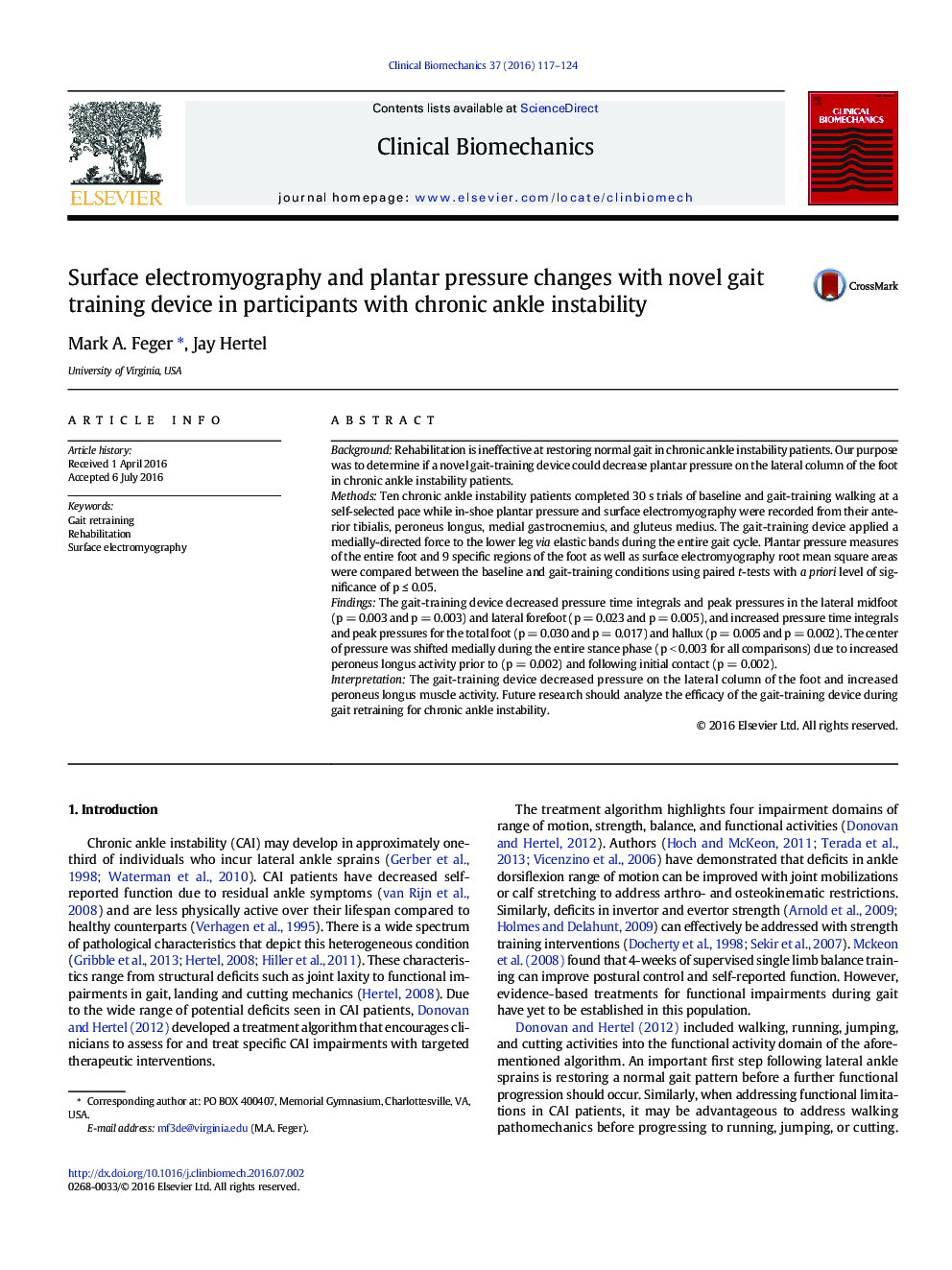| کد مقاله | کد نشریه | سال انتشار | مقاله انگلیسی | نسخه تمام متن |
|---|---|---|---|---|
| 4050024 | 1603741 | 2016 | 8 صفحه PDF | دانلود رایگان |
• Gait-training device improves chronic ankle instability gait profile.
• Gait-training device decreased lateral plantar pressure during gait.
• Gait-training device increased peroneus longus activity during gait.
BackgroundRehabilitation is ineffective at restoring normal gait in chronic ankle instability patients. Our purpose was to determine if a novel gait-training device could decrease plantar pressure on the lateral column of the foot in chronic ankle instability patients.MethodsTen chronic ankle instability patients completed 30 s trials of baseline and gait-training walking at a self-selected pace while in-shoe plantar pressure and surface electromyography were recorded from their anterior tibialis, peroneus longus, medial gastrocnemius, and gluteus medius. The gait-training device applied a medially-directed force to the lower leg via elastic bands during the entire gait cycle. Plantar pressure measures of the entire foot and 9 specific regions of the foot as well as surface electromyography root mean square areas were compared between the baseline and gait-training conditions using paired t-tests with a priori level of significance of p ≤ 0.05.FindingsThe gait-training device decreased pressure time integrals and peak pressures in the lateral midfoot (p = 0.003 and p = 0.003) and lateral forefoot (p = 0.023 and p = 0.005), and increased pressure time integrals and peak pressures for the total foot (p = 0.030 and p = 0.017) and hallux (p = 0.005 and p = 0.002). The center of pressure was shifted medially during the entire stance phase (p < 0.003 for all comparisons) due to increased peroneus longus activity prior to (p = 0.002) and following initial contact (p = 0.002).InterpretationThe gait-training device decreased pressure on the lateral column of the foot and increased peroneus longus muscle activity. Future research should analyze the efficacy of the gait-training device during gait retraining for chronic ankle instability.
Journal: Clinical Biomechanics - Volume 37, August 2016, Pages 117–124
